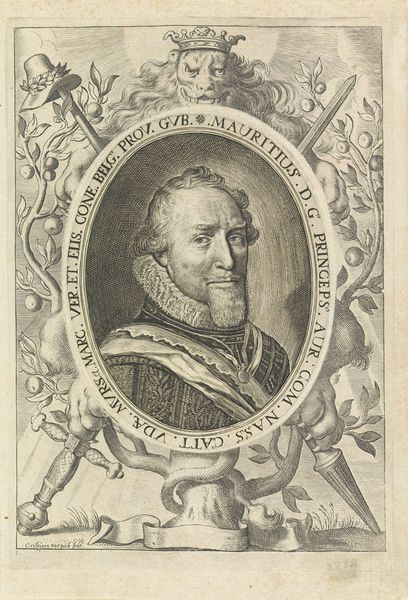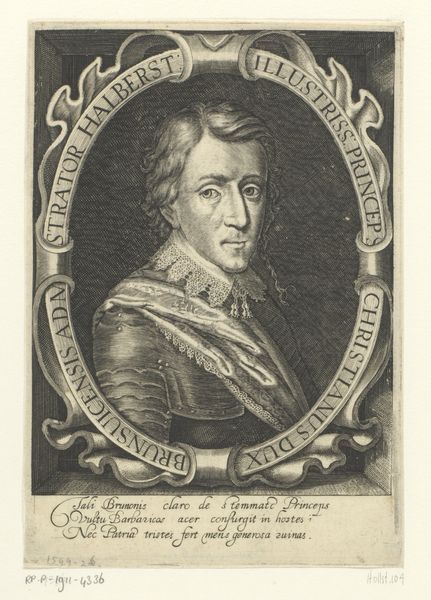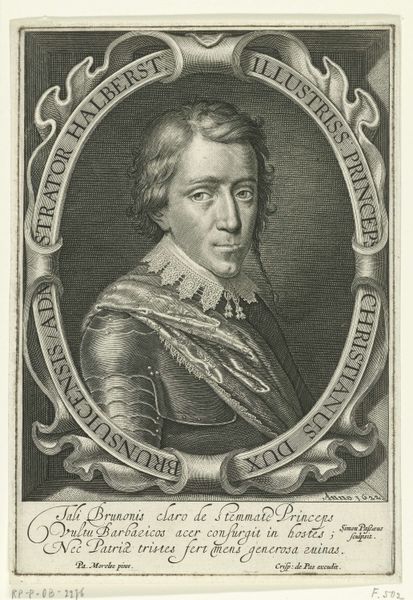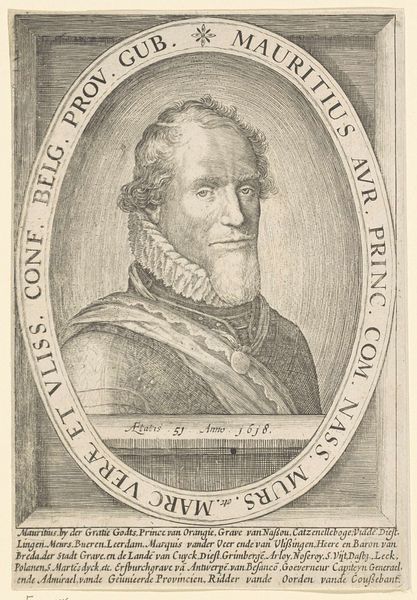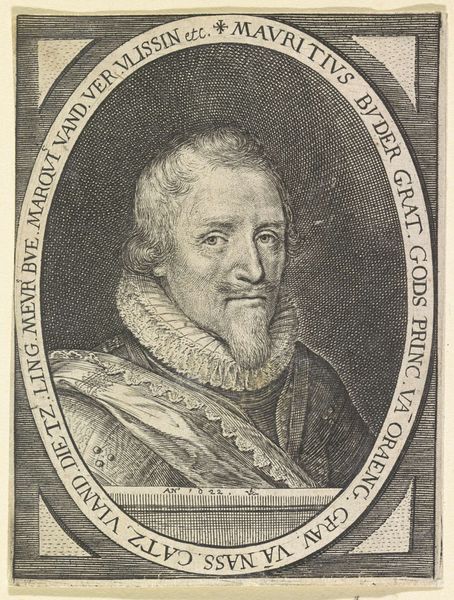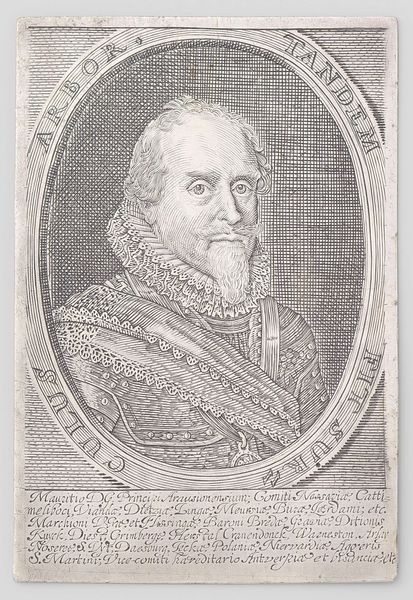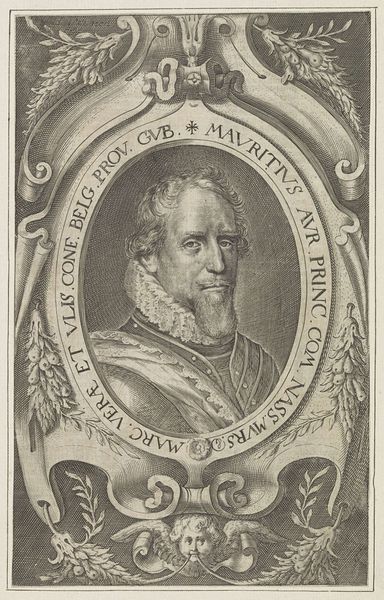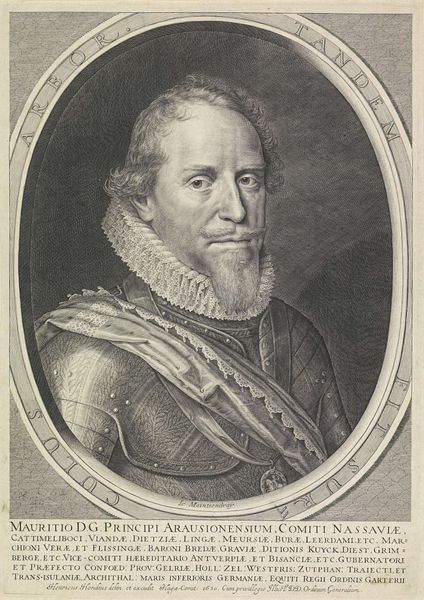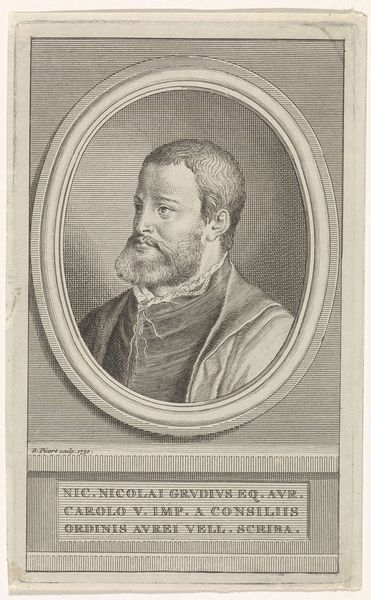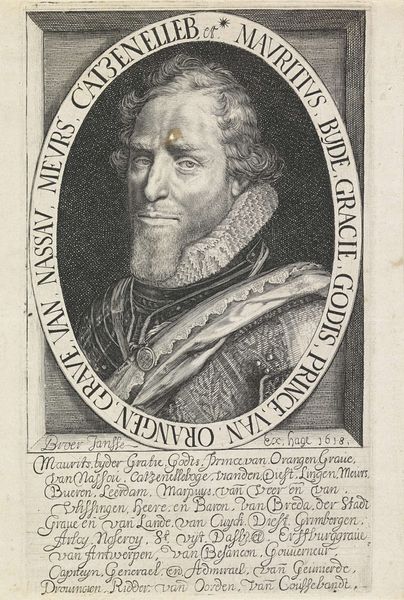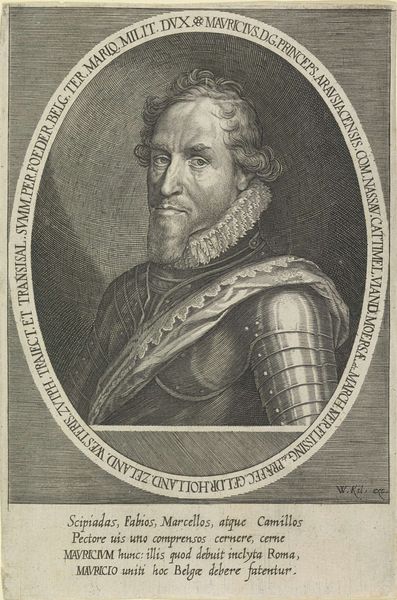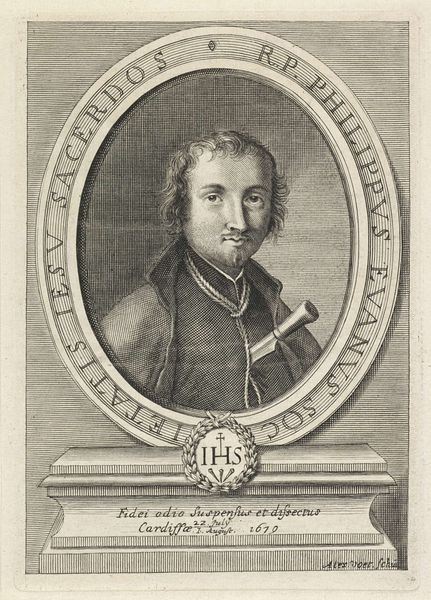
print, engraving
#
portrait
#
baroque
#
dutch-golden-age
# print
#
line
#
history-painting
#
engraving
Dimensions: height 124 mm, width 88 mm
Copyright: Rijks Museum: Open Domain
Editor: Here we have a print from 1614, titled "Portret van Maurits, prins van Oranje" - or "Portrait of Maurice, Prince of Orange." It looks like an engraving. I'm struck by the incredible detail achieved with just lines, especially in his armor and that elaborate collar. What do you see in this piece from a formalist perspective? Curator: The power of this work truly resides in its line. Note how variations in thickness and density are employed to model form and create tonal contrasts, especially evident in the rendering of Maurits's face. Observe how the lines curve to define the contours of his cheekbones and the folds of skin around his eyes, contrasting with the geometric precision of the surrounding frame and armor. Editor: I see what you mean about the contrast. It’s almost like the artist is playing with different realities – the human and the symbolic. Do you think the linear quality contributes to the portrait's symbolic meaning? Curator: Precisely. Consider how the linear aesthetic reinforces a sense of controlled dignity befitting a ruler. It forgoes the softness or painterly illusionism found in other contemporary portraits, and privileges instead, graphic clarity, which could symbolize his power and the clarity of his decisions. Editor: It's fascinating how much information can be conveyed just through line. Thanks, I never thought of it like that! Curator: Indeed. Analyzing the formal elements allows us access to a deeper understanding of the artist’s choices and the possible significances attached to them.
Comments
No comments
Be the first to comment and join the conversation on the ultimate creative platform.
